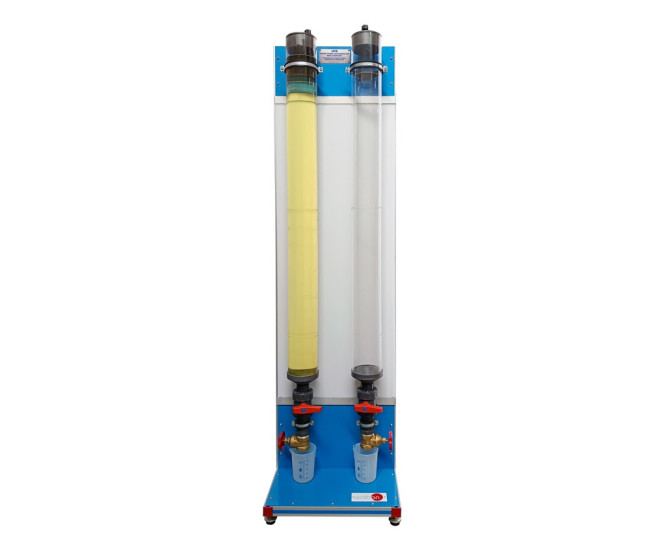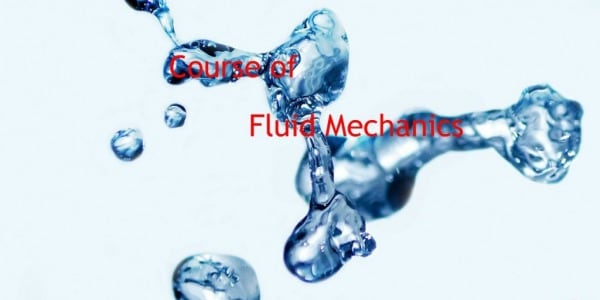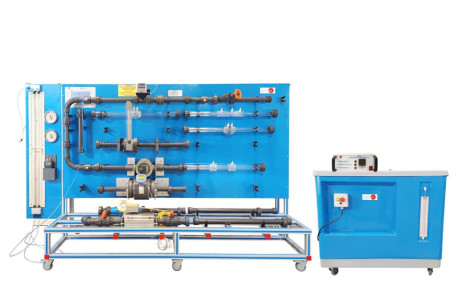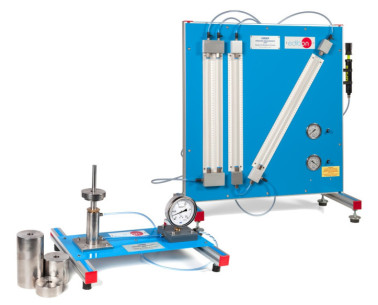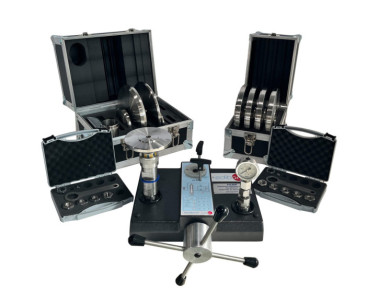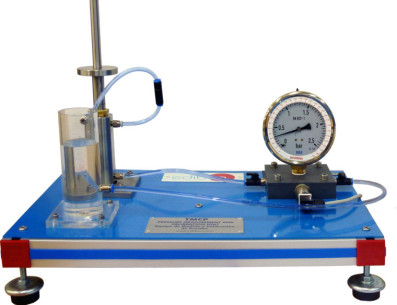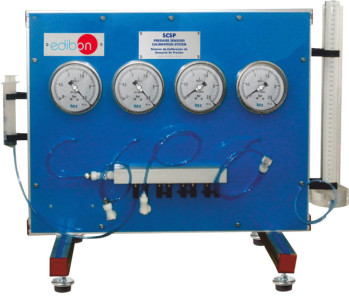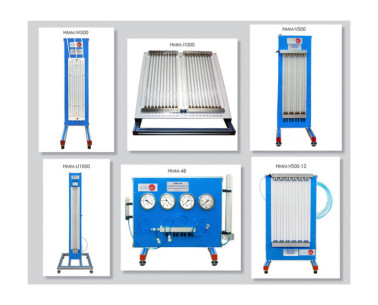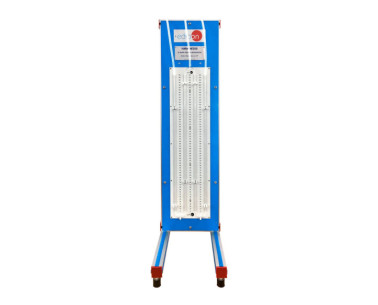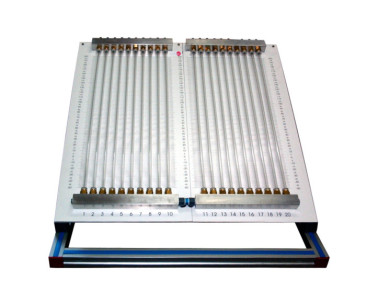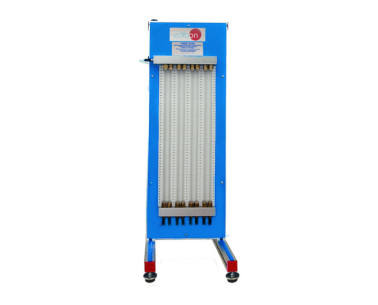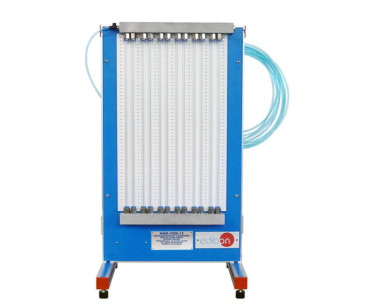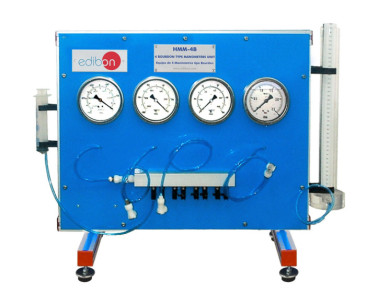HVB 落球式粘度計および抵抗係数測定装置
革新的なシステム
The Drop Ball Viscometer and Resistance Coefficient Determination Unit, "HVB", designer by EDIBON, is used to determine dynamic or kinematic viscosities of fluids and the relationship between the drag coefficients of falling particles and their Reynolds number value.
研究室
関連ニュース
概要
The Drop Ball Viscometer and Resistance Coefficient Determination Unit, "HVB", designed by EDIBON, consists of two precision transparent tubes fixed onto a frame in which a ball is allowed to drop down through different liquids. Both tubes can be filled with liquids of different viscosity. Thus, it is possible to compare the both liquids directly.
The unit is illuminated from behind with two fluorescent lamps to facilitate the visualization of the falling of the balls.
The ball is guided down by a guide to aid the introduction of particles at the top of the tubes with the minimum disturbance to the liquid. The unit includes several guides to facilitate the introduction of smaller balls.
During the exercises, students shall measure the falling rate of the balls by timing their passage between two marks on the walls of the tube.
Balls can be removed from the bottom of the tubes through two valves. Thus, the ball can be removed from the tube without a large loss of liquid.
Kinematic viscosity can be deduced by measuring the falling speed of a ball in a vertical tube filled with the fluid under study. During the uniform rectilinear motion phase, the forces which apply to the sphere, the gravity, the pressure of Archimedes and the force of the trail related to viscous friction are in balance.
The design of the unit is such that it is suitable both for practical trainee experiments in the fields of physics or engineering and for demonstration in the classroom.
The unit is supplied with a set of balls of different size, a stopwatch and two beakers.
演習と指導の慣行
マニュアルに含まれるガイド付き実習
- Determination of the Reynolds number.
- Determination of the dynamic and kinematic viscosity of a fluid.
- Drag coefficient of various particles of spheres.
- Measurements of the spheres resistance coefficients vs Reynolds number.
- Measurement of the terminal velocities of the spheres.
補完的な機器
圧力測定実験装置
精密圧力ゲージキャリブレーター
圧力測定・キャリブレーション実験装置
圧力センサーキャリブレーションシステム
マノメーター・マルチマノメーター(各種タイプ)
U字型ダブルマノメーター
U字型マノメーター
傾斜型マルチマノメーター(250mm検圧管x20)
マルチマノメーター( 500mm検圧管x8, 垂直型)
マルチマノメーター(500mm検圧管x12, 垂直型)
ブルドン型マノメーター(x4)実験装置
品質

アフターサービス

 クッキーの設定
クッキーの設定

